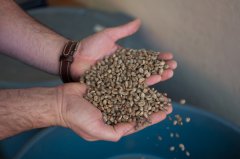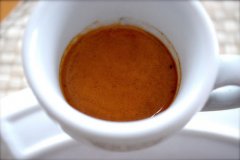What are the nine steps to distinguish between "good coffee" and "bad coffee"? What is good coffee?

How to judge "good" coffee and "bad" coffee? Finally, an expert is willing to make it clear!
Clancy Rose, the second winner of the 2015 US Coffee Championship Baker's Choice Award, teaches you to distinguish between good and bad coffee from nine aspects: in addition to the differences in coffee beans themselves, the growth environment, climate, aroma, drying and storage time of coffee all affect the quality of coffee.
Microclimate where coffee beans grow
Coffee comes in many shapes and sizes, and although most of them are the same shape, it is best to grow specific varieties according to different local microclimates. The best farmers will adjust measures to local conditions.
Picking time
At the end of the harvest season, coffee beans are picked before they are fully ripe in preparation for the next season. Most of these coffee beans are classified as bad varieties called "subgrade" because they are not ideal.
Do you want to highlight the ideal feature or cover up the defect in the baking process?
Not to mention that any roaster, even ordinary people, can produce dry, gray and dark coffee. This is a way to cover up defects, to produce more complex fruity or caramel-flavored coffee, high-quality coffee beans and attention to detail are indispensable.
The degree of attention during drying
Once the coffee beans are picked, there are several different ways to dry the beans. The easiest way is to leave them outside for a few weeks, or use an expensive dryer. High-quality coffee beans are tested at any time to make sure they don't get moldy, while poor ones are left unattended in the sun because labor costs are too high.
Whether the coffee is cooled with water
There are too many coffee beans roasted at one time in a large coffee roaster, so it is impossible to use air to cool down, and it is necessary to spray water mist quickly inside. Although there is no obvious data, many bakers believe that although the water evaporates quickly, if the water comes into contact with the coffee beans, it will reduce the overall quality.
The amount of coffee bought by the roaster
From the perspective of farm grade, there is a direct relationship between quality and quantity. The quantity of high-quality coffee in the world is by no means sufficient for large roasters. Small companies can buy 5-10 bags, as well as other high-quality coffee for limited or small-scale operations, but these quantities are far less than a batch order from a large roaster. Once a roaster reaches a certain scale, their ability to provide high-quality coffee is greatly reduced.
Storage time
If the coffee beans used in the coffee shop come from a good local baker, they are coffee beans within a week, which ensures freshness. Different from coffee beans from big brands but not of high quality.
Emphasize "quality" or "quantity"
In order to expand the scale, many manufacturers will eventually sacrifice quality because of the quantity of production. When roasting coffee beans for £2 million a week, there is no time for subtleties.
Analysis of the aroma of coffee
What makes coffee special is its fragrance. Although professional bakers often think it silly to take taste notes, if a company uses general terms such as "smooth" or "blod", it shows that they are not trying to present more subtle features.
Important Notice :
前街咖啡 FrontStreet Coffee has moved to new addredd:
FrontStreet Coffee Address: 315,Donghua East Road,GuangZhou
Tel:020 38364473
- Prev

The important difference between boutique coffee and commercial coffee the characteristics of fine coffee
What are boutique coffee beans? What is the difference between fine beans and commercial beans? Boutique coffee, translated from English Specialty Coffee, is a proper noun that does not reach the meaning of the word but has no better translation for the time being. it refers to the coffee with special regional flavor grown in the special geographical and microclimatic environment. The word Specialty Coffee was first mentioned by Ms. Erna Knustsen of the United States in 1974.
- Next

The taste of mocha beans what are the flavors of mocha beans? There are several flavors of mocha coffee
It is one of the most sour coffee, mocha coffee is sometimes called Ethiopian coffee. Mocha beans are so popular because of their rich taste. Aromas of red wine, wild game, dried fruit, blueberries, grapes, cinnamon, tobacco, sweet spices, log, and even chocolate. Europeans like mocha coffee very much and have always used it as a kind of consumption.
Related
- What is the meaning of lactic acid fermentation with coffee bean treatment?
- How to judge the state of foam by sound?
- How does the latte pull out the unicorn pattern? Come to get for a little trick to improve the flower pull!
- Will flower pulling affect the taste of the latte?
- Do you know the history of coffee?
- The difference between honey treatment and sun washing what is raisin honey treatment?
- What kind of milk can a novice use to make coffee foam to keep the foam longer? The correct method and skills of milking tutorial sharing
- Why do washed coffee beans taste sour? Flavor characteristics of washed Coffee
- Introduction to the skill of how to practice the size and height of water injection around the circle of hand-brewed coffee
- How do beginners practice coffee flower drawing from scratch?

